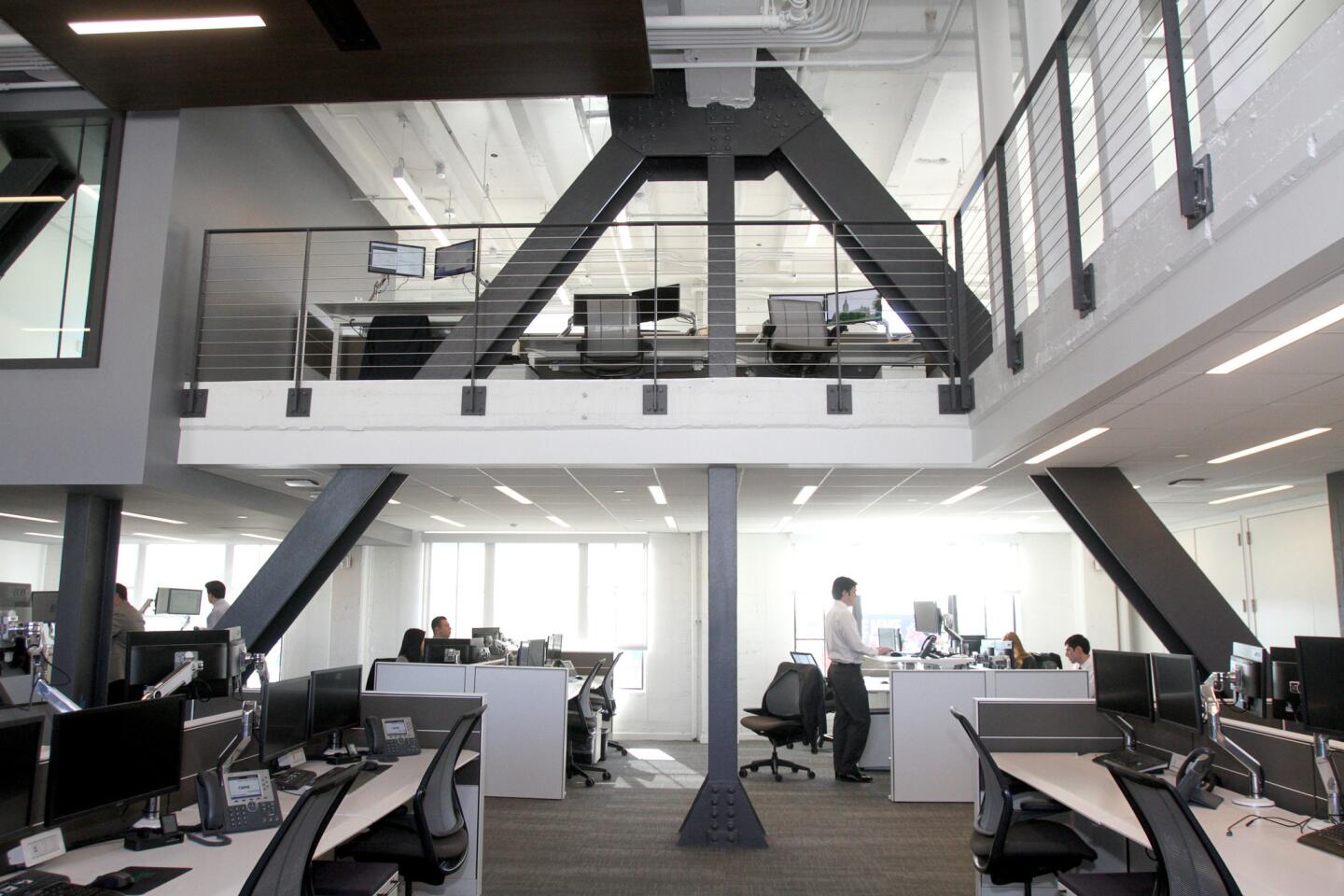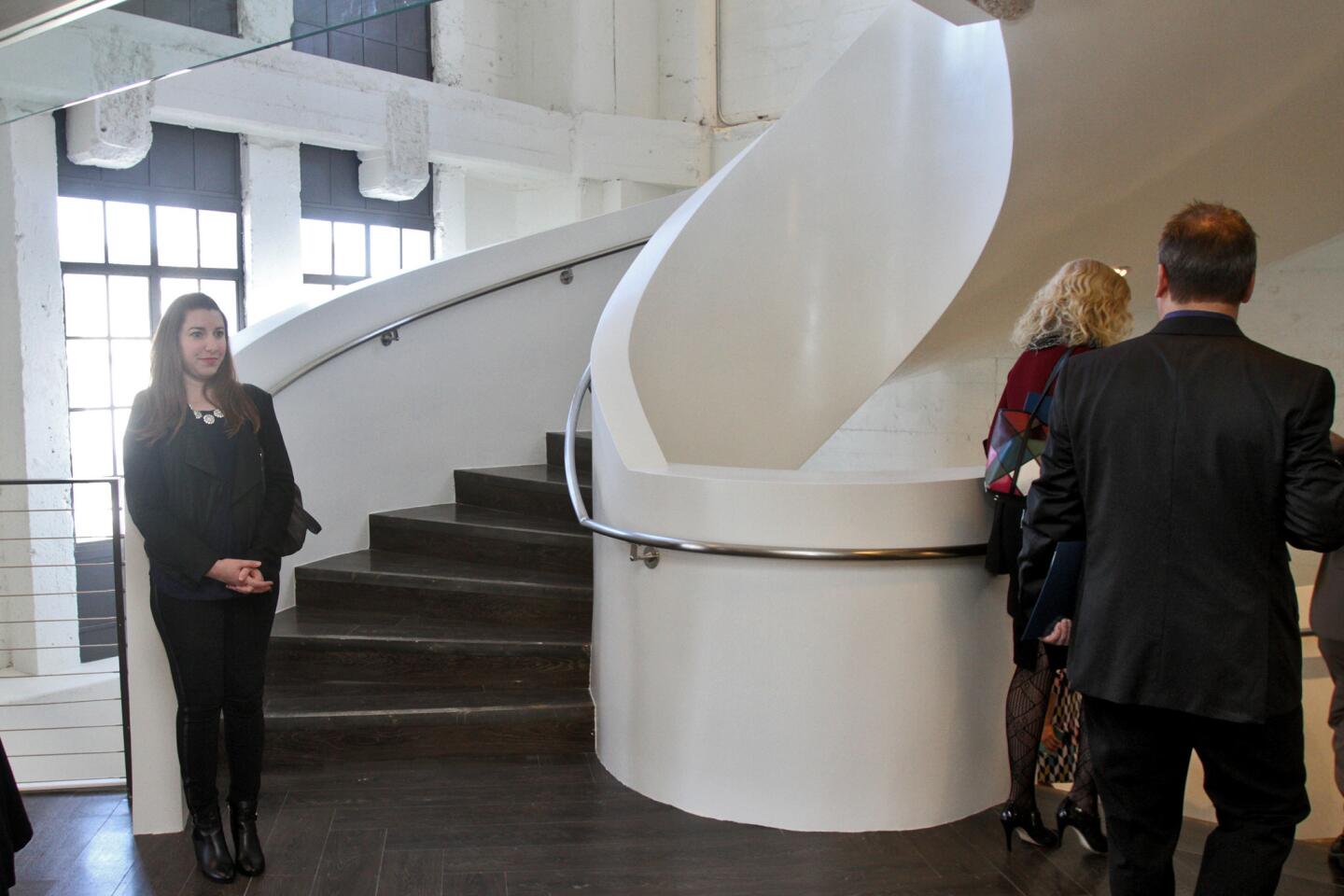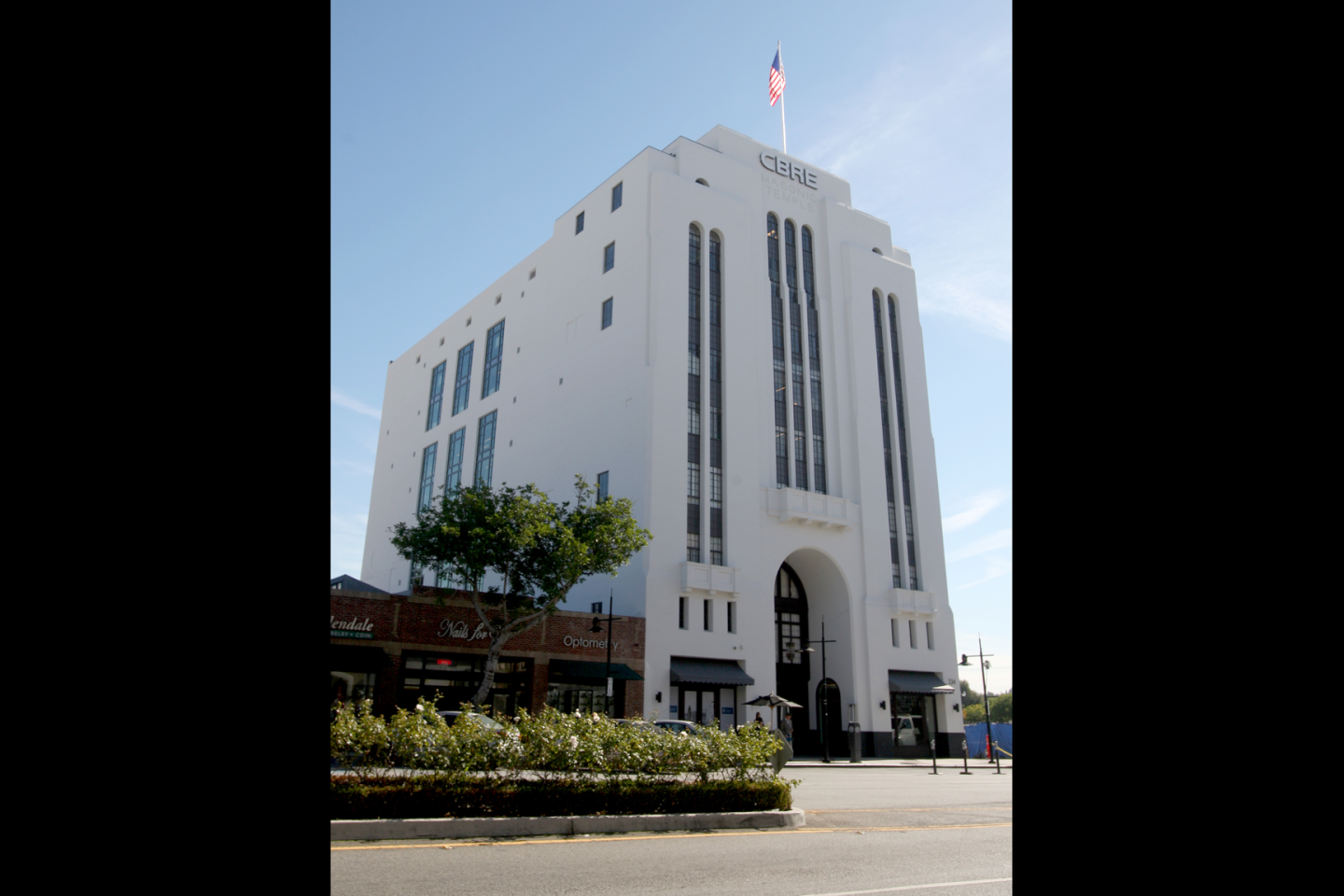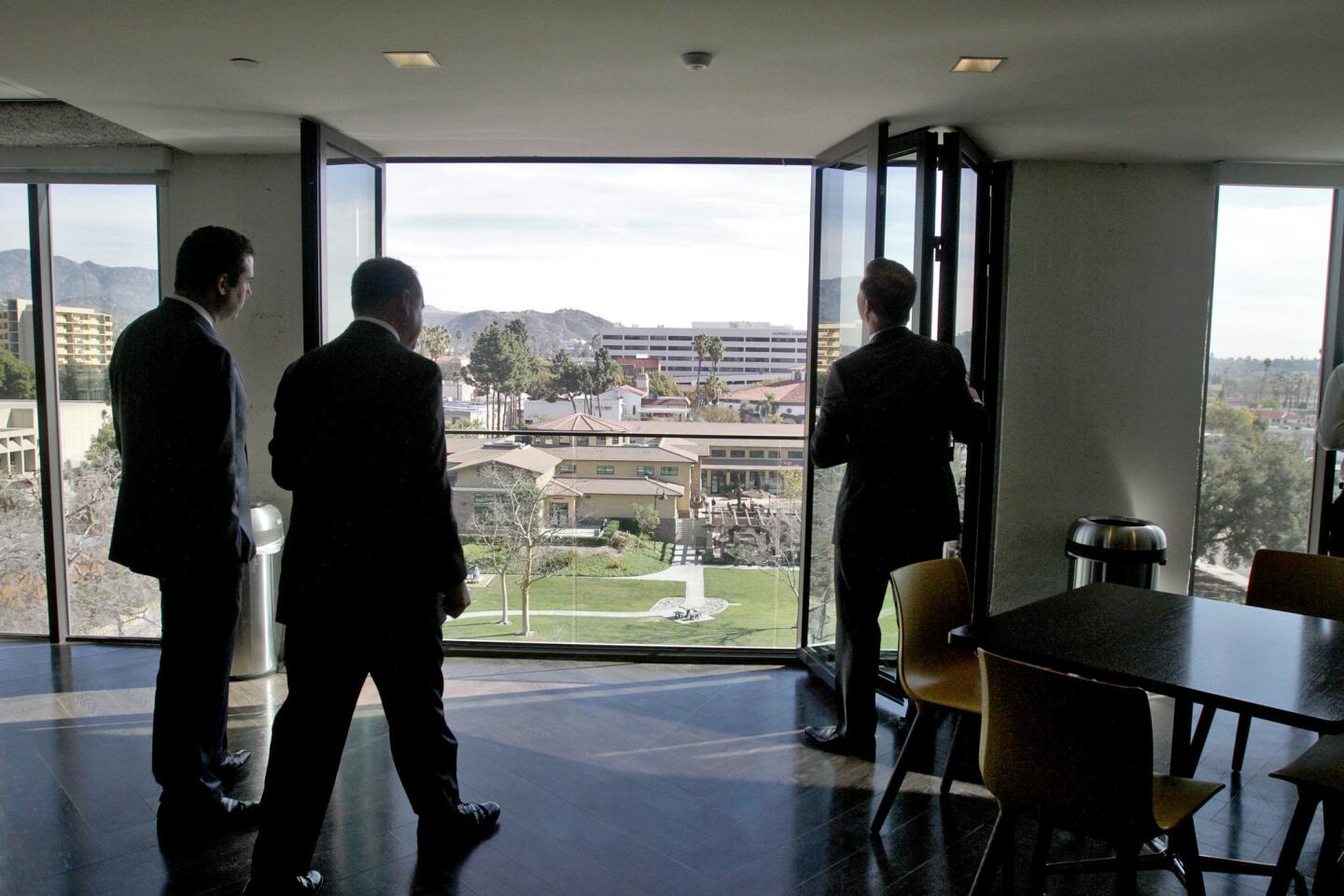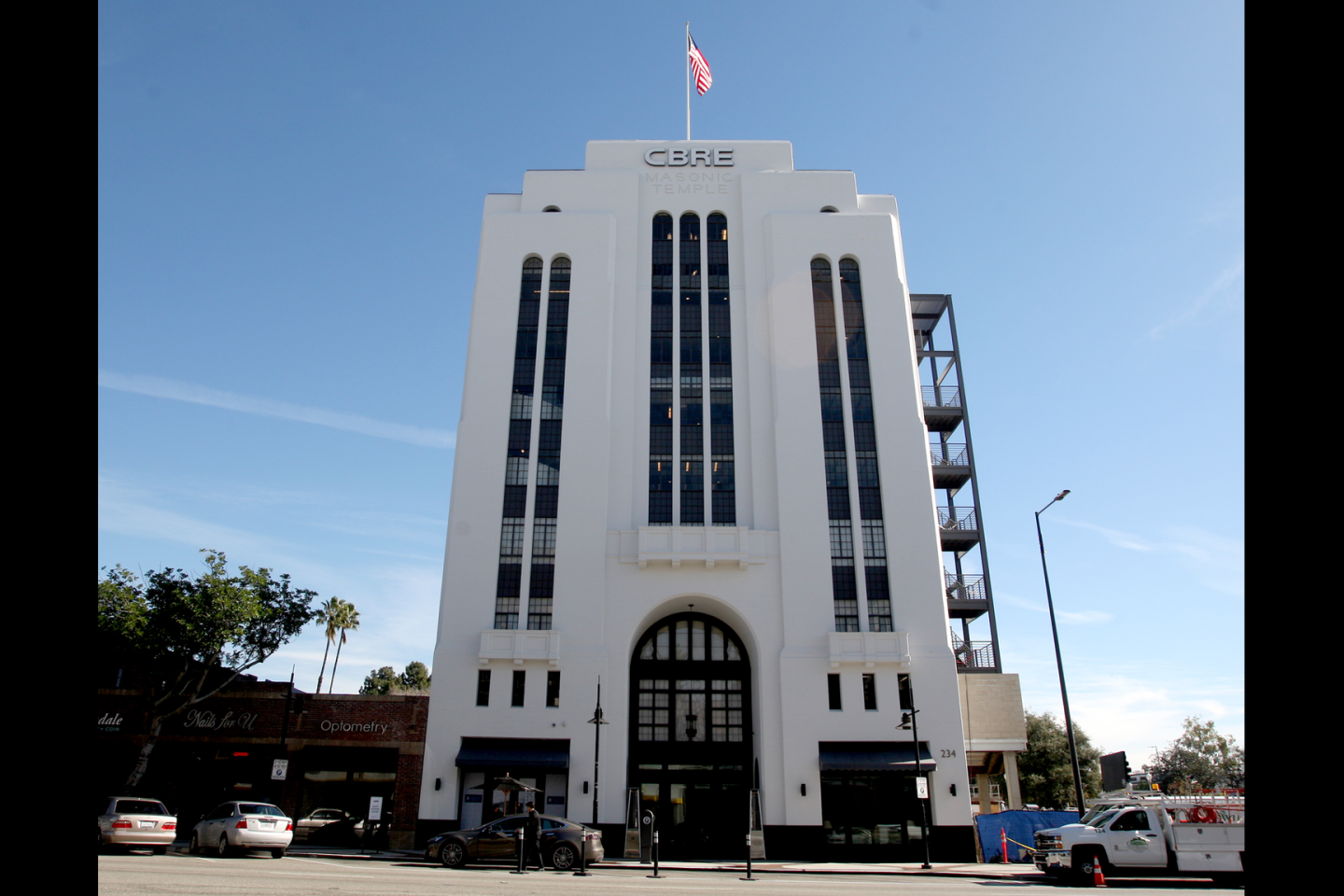Glendale Masonic Temple finds new life as an office building with more tenants possibly to come
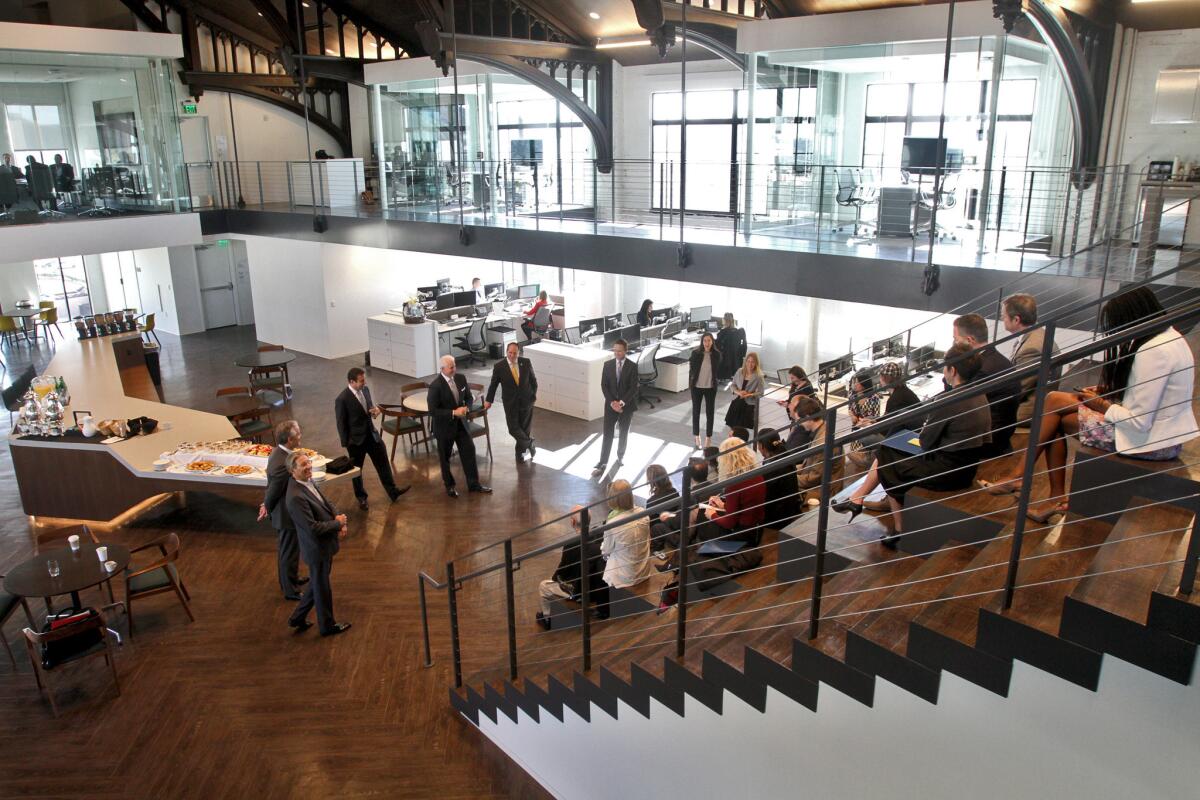
CBRE, Inc. and Caruso Affiliated officials gave a tour of the former Masonic Temple building Thursday, Jan. 21, 2016. CBRE, a commercial real estate firm, occupies the top four floors and has optioned for two additional lower floors. The nine-story 1929 Art Deco building has been refurbished by Caruso Affiliated.
A once vacant room overlooking downtown Glendale for decades on the top floor of the Masonic Temple on Brand Boulevard is now a sleek office space for a major commercial real estate firm.
“The floors that we’re standing on have not been occupied since 1957,” said Tom Veje, executive vice president of construction for Caruso Affiliated, which purchased the temple last spring. “It’s been almost 60 years since this space had enjoyed having an environment where people enlivened it.”
The development firm’s top brass — minus founder Rick Caruso — gathered Thursday in the nine-story building that just underwent a nearly yearlong “adaptive reuse” transformation.
Built in 1929 and designed by architect Arthur G. Lindley, who also conceived the look of the historic Alex Theatre just a few blocks north on Brand, the temple for a few decades was used by the Masons.
The only other use it saw from then on was performances produced by A Noise Within theater troupe.
Now, four floors of the building are offices for commercial real estate firm CBRE, which moved in earlier this month.
Lewis Horne, president of the firm in Los Angeles and Orange County, said the office is set up in a way that an employee can access their work from any desk they like: something he calls “free address.”
He said 125 employees currently work in the renovated temple, and, once the remodeling of two more floors is finished, the staff size will double.
Creating new office space, along with retail and housing, is crucial to the growth of the area, said Tim Gallagher, spokesman for the Downtown Glendale Assn.
“It’s really one ingredient in what makes a great downtown,” he said.
It’s the first office-space project for Caruso Affiliated. It seemed like a massive undertaking, but the company was granted a handful of approvals from the city’s Historic Preservation Commission and work got underway on major renovation efforts over the summer.
“I think the primary ability to get it done that quickly was that the bones of the building were very strong,” said David Williams, executive vice president of architecture for Caruso Affiliated.
For almost nine decades, the building has been around for major earthquakes, and it doesn’t show much wear and tear, Williams added.
From the outside, the most visible changes from the renovation are to the windows. To accommodate the secrecy of the Masons, the Masonic Temple had an unconventional window pattern — they were scattered around the sides of the structure in random order.
The Glendale Historical Society had some objections to changing the layout, but Caruso officials said some modifications had to be made to create usable office space.
Greg Grammer, the group’s president, said he’s glad the developer was able to maintain the look of the building’s front side.
“We’re pleased to see the front façade has been restored to look much closer to the building’s original appearance,” he said.
Eighteen, 20-foot-tall windows were cut into the sides of the structure.
The front façade didn’t need as many changes, so instead of new windows, existing ones were refurbished, Veje said.
He added that as many as 225 people worked on the restoration effort.
However, the basement, first floor and second floor remain unoccupied for the time being and could see a restaurant open in any of those spaces. There is a short list of potential tenants and a single one could take up multiple floors, Veje said.
That announcement is pending.
The Masonic Temple is located across the street from the Americana at Brand, another Caruso Affiliated project, which opened in 2008.
“To us, [the Masonic Temple] is a monument to the resurgence of Glendale,” Williams said.
--
Arin Mikailian, [email protected]
Twitter: @ArinMikailian

